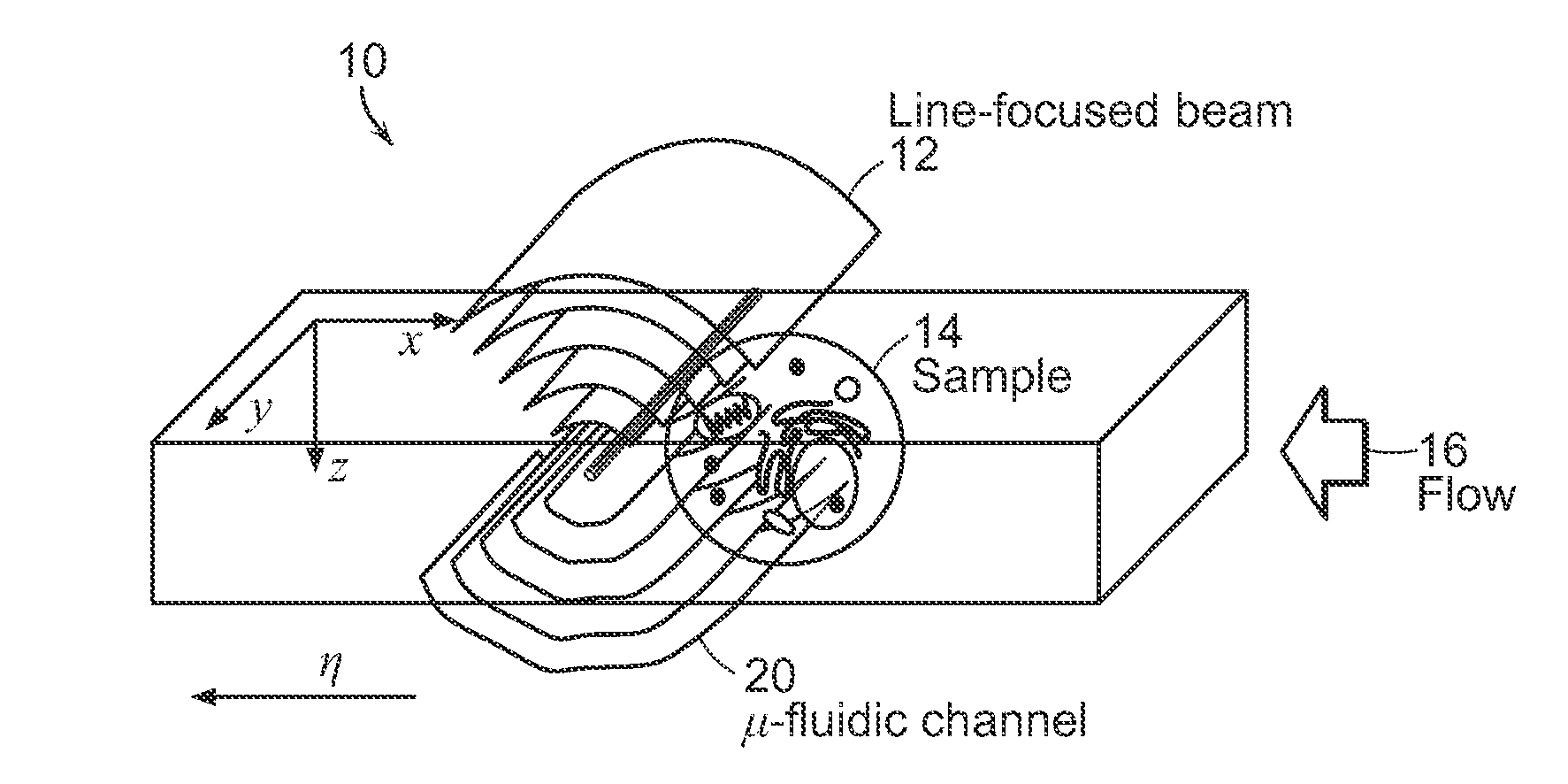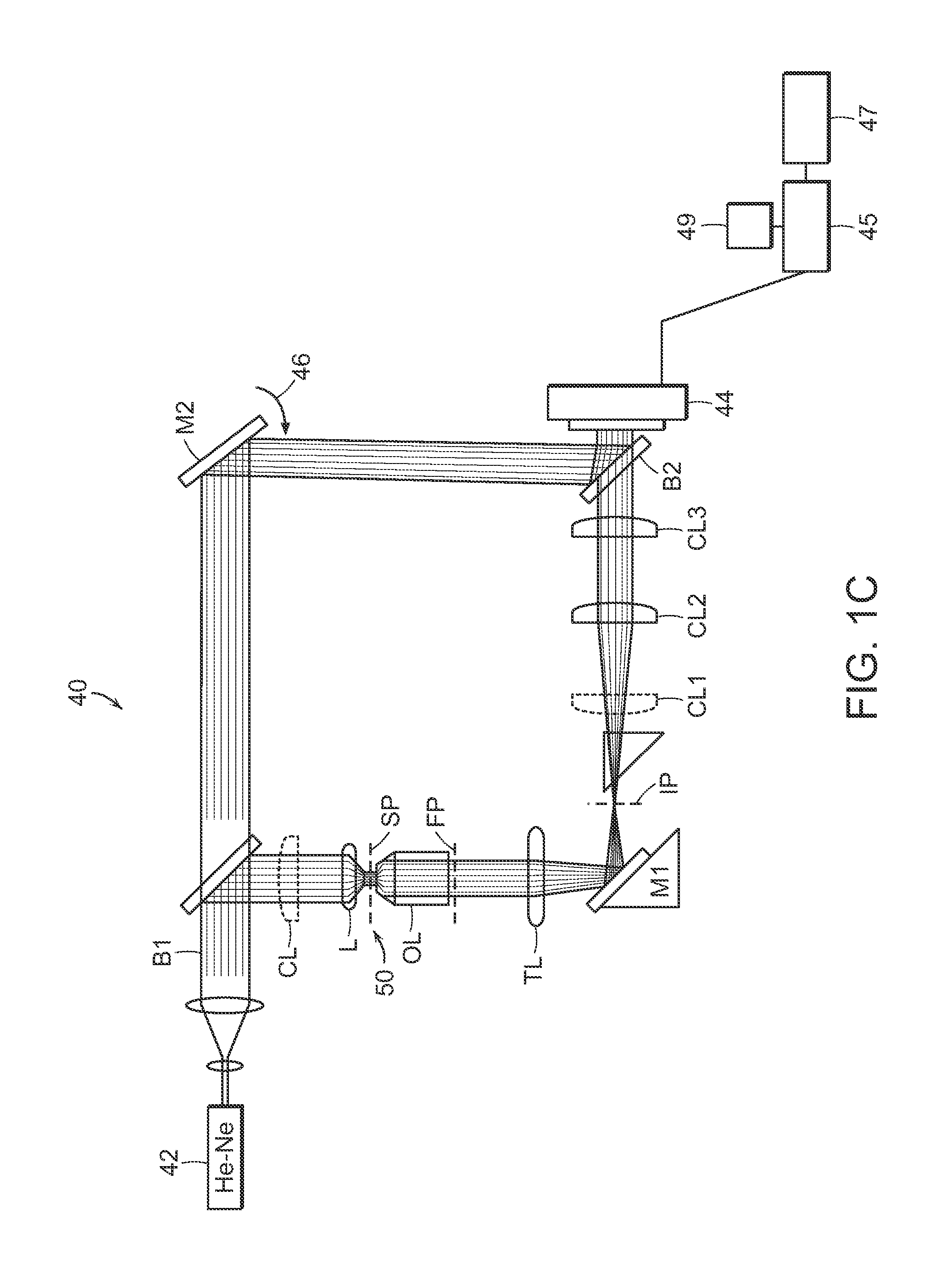3-d holographic imaging flow cytometry
- Summary
- Abstract
- Description
- Claims
- Application Information
AI Technical Summary
Benefits of technology
Problems solved by technology
Method used
Image
Examples
Embodiment Construction
[0024]Refractive index (RI) of biological specimens is a source of intrinsic contrast that can be explored without any concerns of photobleaching or harmful effects caused by extra contrast agents. In addition, RI contains rich information related to the metabolism of cells at the cellular and subcellular levels. The subject application discloses a no-moving parts approach that provides three-dimensional (3-D) RI maps of biological samples continuously flowing in a microfluidic channel. Specifically, line illumination and off-axis digital holography is used to record the angular spectra of light scattered from flowing samples at high speed. In addition, an optical diffraction tomography algorithm is applied to obtain accurate RI maps of the samples from the measured spectra. As demonstrated in empirical studies described herein, the systems and methods of the present disclosure have proven effective in label-free 3-D imaging of live RKO human colon cancer cells and RPMI8226 multiple...
PUM
 Login to View More
Login to View More Abstract
Description
Claims
Application Information
 Login to View More
Login to View More - R&D
- Intellectual Property
- Life Sciences
- Materials
- Tech Scout
- Unparalleled Data Quality
- Higher Quality Content
- 60% Fewer Hallucinations
Browse by: Latest US Patents, China's latest patents, Technical Efficacy Thesaurus, Application Domain, Technology Topic, Popular Technical Reports.
© 2025 PatSnap. All rights reserved.Legal|Privacy policy|Modern Slavery Act Transparency Statement|Sitemap|About US| Contact US: help@patsnap.com



